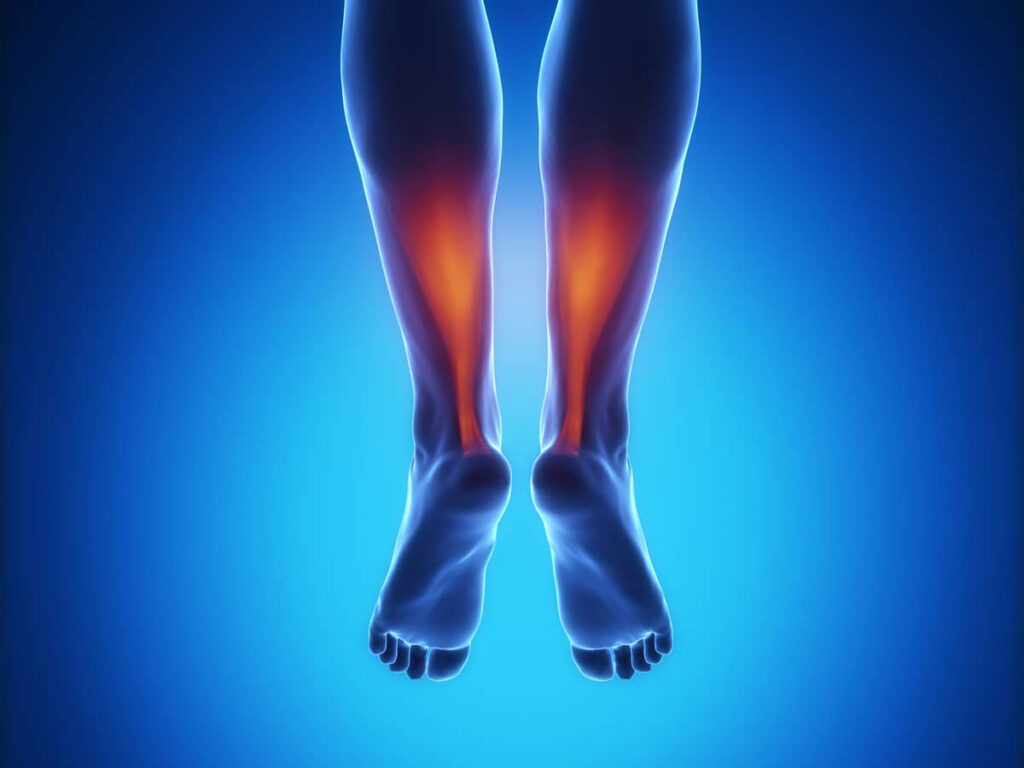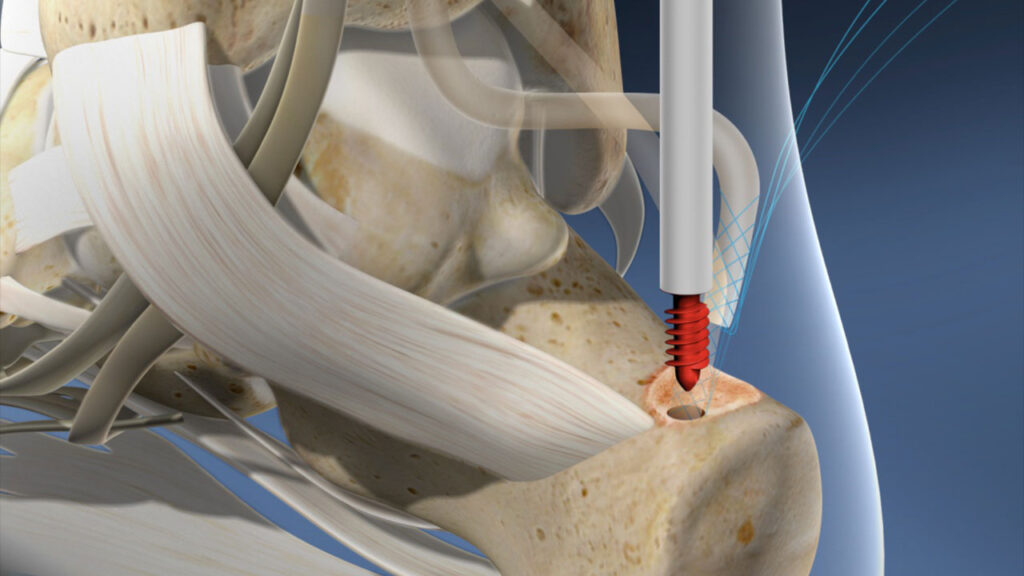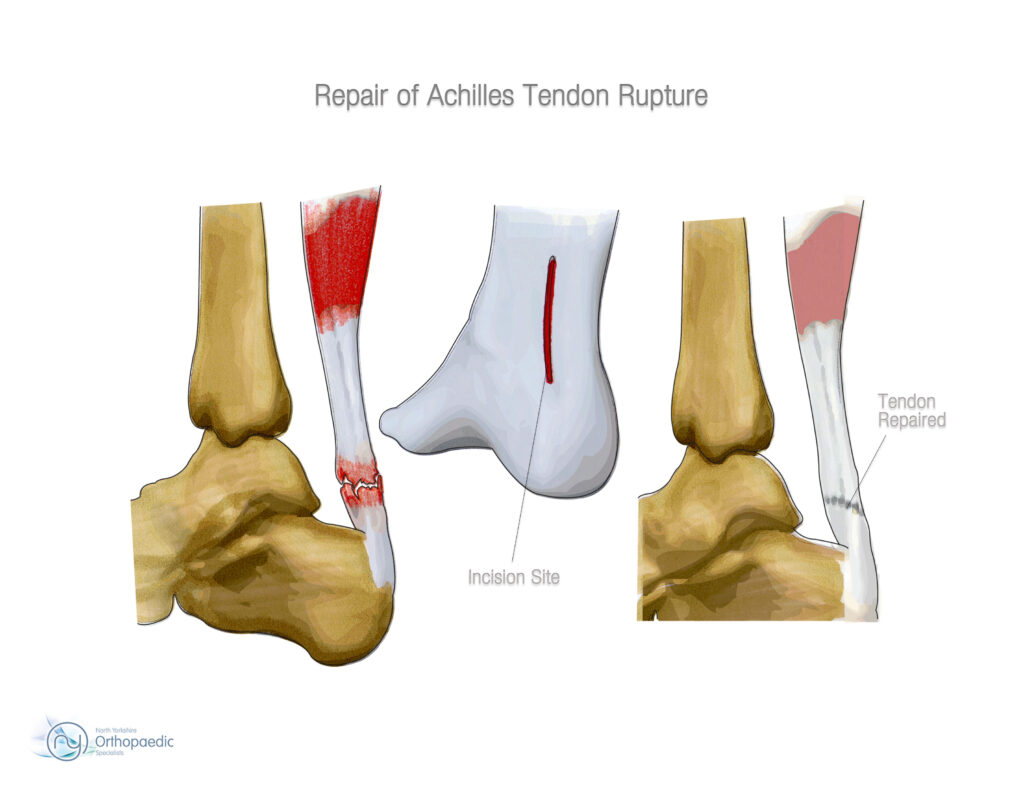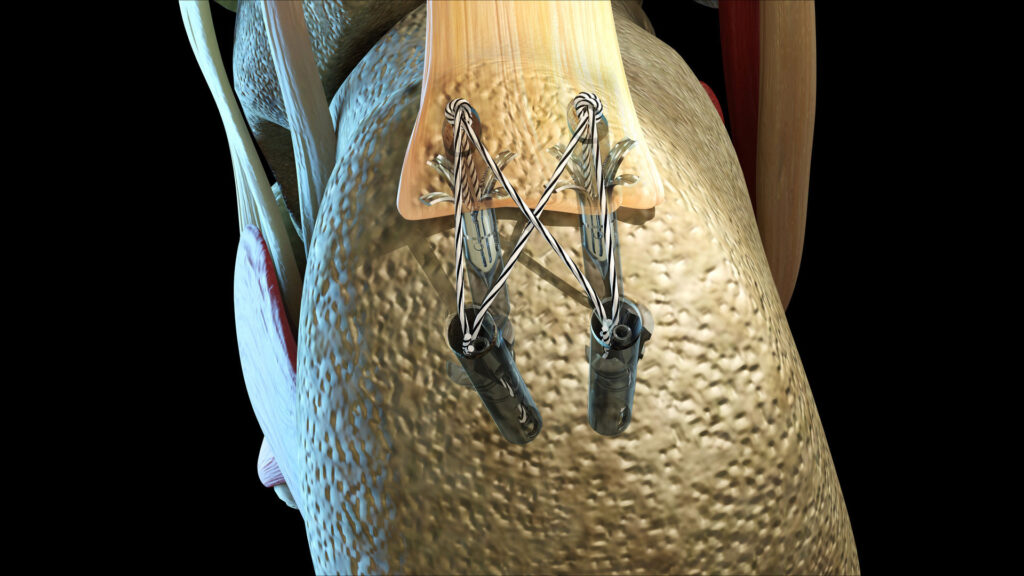Achilles Tendon Repair
Achilles Tendon Repair
Achilles tendon repair surgery is a common surgical procedure that is used to fix a torn Achilles tendon. The Achilles tendon is the largest and strongest tendon in your body, and it connects your calf muscles to your heel bone. It allows you to point your toes, rise up on your toes, and walk on your heels. A tear in the Achilles tendon can make it difficult or impossible to do these things. Surgery may be recommended if other treatments, such as physical therapy and orthotics, have not been successful in fixing the tear.

What is the Achilles tendon and what does it do?
The Achilles tendon is a tough band of tissue that connects the calf muscle to the heel bone. It enables the calf muscle to push the heel during activities such as walking, running, and jumping.
The Achilles tendon can be injured by overstretching, overuse, or direct impact. Symptoms of an Achilles tendon injury include pain and swelling in the back of the leg. Treatment typically involves rest, icing, elevation, and any sort of pain medicine. In severe cases, surgery may be necessary to repair the damaged Achilles tendon.
The Achilles tendon is a key component of the lower leg, helping to power movements like walking, running, and jumping. It is one of the largest and strongest tendons in the body, but it is also susceptible to injury.

Symptoms of an Achilles Tendon Injury
Symptoms of an Achilles tendon injury include pain and swelling in the back of the leg or calf weakness complications. The pain may be mild at first, but it can become severe enough to make walking or other activities difficult. There may also be a popping or snapping sound when the injury occurs.
If you think you may have any Achilles tendon tears, see your doctor for a diagnosis and treatment plan. With proper care, most people can recover from an Achilles tendon injury and return to their normal activities.
Causes of Achilles tendon injuries
Achilles tendon injuries are most often caused by overuse, such as during sports training or running. However, they can also be caused by sudden force, such as a fall or direct blow to the Achilles tendon.
In some cases, the injury may be due to a medical condition, such as arthritis. Treatment for an Achilles tendon depends on the severity of the injury and may include rest, ice, and physical therapy. Surgery is sometimes necessary to repair the tendon.
Achilles tendon injuries are most often seen in people who participate in sports that involve running or jumping. However, even everyday activities such as walking can put stress on the Achilles tendon and lead to an injury. The Achilles tendon is the largest tendon in the body and connects the calf muscle to the heel bone. This tendon is used when walking, running, and jumping.
Achilles tendon injuries are serious and can be very painful. If you think you may have an Achilles tendon injury, it is important to see a doctor right away.
Treatment options for Achilles tendon injuries
The treatment for the Achilles tendon tear depends on the type and severity of the injury. For most Achilles tendon injuries, conservative treatment is all that is needed for a full recovery.
This may include Rest, Compression, and Elevation (RICE), physical therapy, ice, and pain medicines. Surgery may be needed in severe cases.
Achilles tendon injuries can be treated with a variety of methods, depending on the severity of the injury. For most Achilles tendon injuries, conservative treatment is all that is needed for a full recovery. This may include the following
Rest:
It is important to rest the injured ankle and avoid any activities that may aggravate the condition.
Ice:
Applying ice to the affected area can help reduce swelling and pain.
Compression:
Wearing a compression bandage can also help to reduce swelling.
Elevation:
Keeping the affected ankle and leg elevated above the level of the heart can also help reduce swelling.
Physical therapy:
A physical therapist can teach you exercises to stretch and strengthen the Achilles tendon and other muscles in the leg
Medications:
Non-steroidal anti-inflammatory drugs (NSAIDs), such as ibuprofen, can be used to reduce pain and inflammation.
Surgery:
In severe cases, surgery may be necessary to repair the Achilles tendon rupture.
After the initial period of rest and conservative treatment, it is important to slowly start to increase your activity level. This should be done gradually and under the guidance of a physical therapist or other healthcare professional.
Once you have fully recovered from your Achilles tendon injury, it is important to perform regular stretching and strengthening exercises to help prevent future injuries.

Recovery from Achilles tendon surgery
Recovery from the Achilles tendon injury can be a long and difficult process. The surgery itself is usually successful in repairing the tendon, but the recovery can be slow and strenuous. Here are some tips to help you through your recovery:
It is important to follow your surgeon's instructions carefully and to give yourself time to heal properly.
Follow your surgeon's instructions:
Recovery from the Achilles tendon injury can be a long and difficult process. The surgery itself is usually successful in repairing the tendon, but the recovery can be slow and strenuous. It is important to follow your surgeon’s instructions carefully and to give yourself time to heal properly. Here are some tips to help you through your recovery:
Give yourself time to heal:
Recovery from Achilles tendon surgery can be slow and difficult. It is important to be patient and give your body time to heal properly. Expect to be on crutches for at least a few weeks, and expect your operated leg to feel weak and stiff for some time.
Physical therapy:
Physical therapy is an important part of recovery from Achilles tendon surgery. Your physical therapist will help you regain range of motion in your operated leg and strengthen the muscles around your Achilles tendon. Physical therapy can be painful, but it is essential for a successful recovery.
Take it easy:
Once you are out of the hospital, it is important to take it easy and not overdo it. Do not try to return to your normal activities level too soon. A gradual increase in activity level is important to avoid re-injuring your ruptured Achilles tendon.
Be patient:
Recovery from a minimally invasive surgery can be a long and difficult process. It is important to be patient and give yourself time to heal properly after a surgical repair. Expect setbacks and do not get discouraged if you have a slow recovery. With time and patience, you will eventually regain full use of your ankle and leg muscles.

Are you suffering from a Achilles Tendon Rupture?
We’ve helped hundreds of people at all walks in life
get back to performing their best painfree!
3 Ways to Level Up Your Rehab and Injury Prevention With Us





